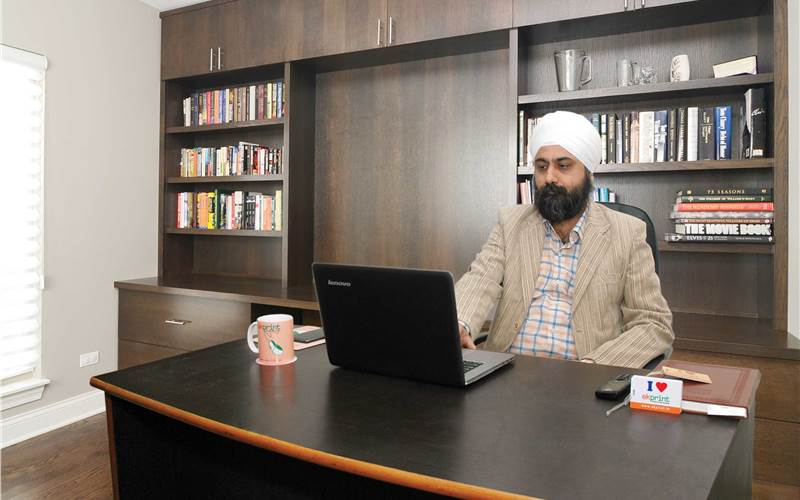Web-to-print isn’t all about big bucks and fancy ideas. Rushikesh Aravkar finds out that if a firm makes the right choices, it can prevent the three degrees of technology disruption
Delhi’s Jantinder Bir Singh, who has been in the business of printing since 1998, established a small quick print shop – Ek Print Solutions –once he had a good number of clients in the kitty. This was a decade ago, in 2006.
Initiating the operations with a pool of designers and outsourcing the print work, Ek Print made humble but nifty investments to keep the business going. Then he invested in a plastic card printing machine and in-house binding capabilities, and then a Konica Minolta digital colour machine C6501, and later, a Monotech Pixeljet UV printer. One by one, Singh was ticking all the right boxes.
When he first heard about web-to-print, back in 2010, Singh was impressed with the idea. “I could add more clients from anywhere in the country.” This was his first impression about web-to-print. “For sure, it is a business enabler, but designing a perfect web-to-print system can take time, money and a lot of patience,” says Singh.
“There is a clutter in the market,” he explains, adding, “Every website developer will promise to design a web-to-print portal. But very few understand what a print firm needs.”
Ek Print got its first web-to-print system four years ago but switched last year to Image Online’s Flexi Web2Print. “We learned first how not to do it, and now we are putting that experience to good use,” he explains.
The package, he says, is easy to implement and it is user-friendly. The process included concept, development and design, and then finally, launching the website in May 2015.
“It took us three months to elicit the response and get noticed on Google, which was slightly worrying,” recalls Singh. “But we had confidence in what we were doing. Also, Manoj Kotak of Image Online is a good guide.”
With a web-to-print portal, this quick print shop can now compete with the likes of Vistaprints and PrintVenues. “We started offering business cards at the rate of Rs 100 per 100 cards. In addition, if the customer demands round-cut corners we provide it at the same cost.”
The company claims to be the only web store in the country who has in-house plastic card printing capabilities for producing employee ID cards, membership cards, loyalty cards, etc. “Those who print plastic cards cannot afford to invest in a web-to-print system while the web-to-print companies don’t care to invest in a plastic card printer,” says Singh. “This has worked as USP for us. We have also fulfilled plastic card orders for other web-to-print portals.”
Singh says he prefers to go slow. “If I make hefty spends on SEO that would cost me upwards Rs 15000, I can be in the top four on the search results. But, I spend only Rs 4,000 a month.”
Singh’s strategy is to use online presence to market its products offline. He is of the opinion that web-to-print should be looked upon as a marketing tool to support your offline print business. “We get a lot of enquiries for specific needs. If it’s a local customer, we send a person to understand the requirements and get the job done. This helps us in building customer relationships. Publicity through word-of-mouth is important for us. The objective is to retain all the customers who come to Ek Print. And the web store has helped us acquire clients from West and South.”
The company has tied up with Overnight Express for the logistics support. “We have the flexibility to send the printed products via courier service of the customer’s choice. This is available on request, offline.”
In the initial three months, Ek Print’s website reached 1,000 visitors-per-month mark. In January 2016, this grew to 4,000 visitors. “The last week of January was phenomenal. We got 10 orders in a day. Otherwise, it is four to five orders in a week. We are working on keeping the momentum going.”
The company is in the process of redesigning its website. The new website, according to Singh, will be smarter. It will remember the customer and offer products according to its previous choices. Also, look-wise it will be more attractive, images will be larger and number of options per page can be user-defined. “All this is based on customer feedback,” adds Singh.
For print firms who are planning to invest in web-to-print software, Singh has some wise inputs. “It will probably cost more than you think and it won't change the fortunes for your business, but if you do your research and set realistic goals, it will help your bottom line.”














 See All
See All